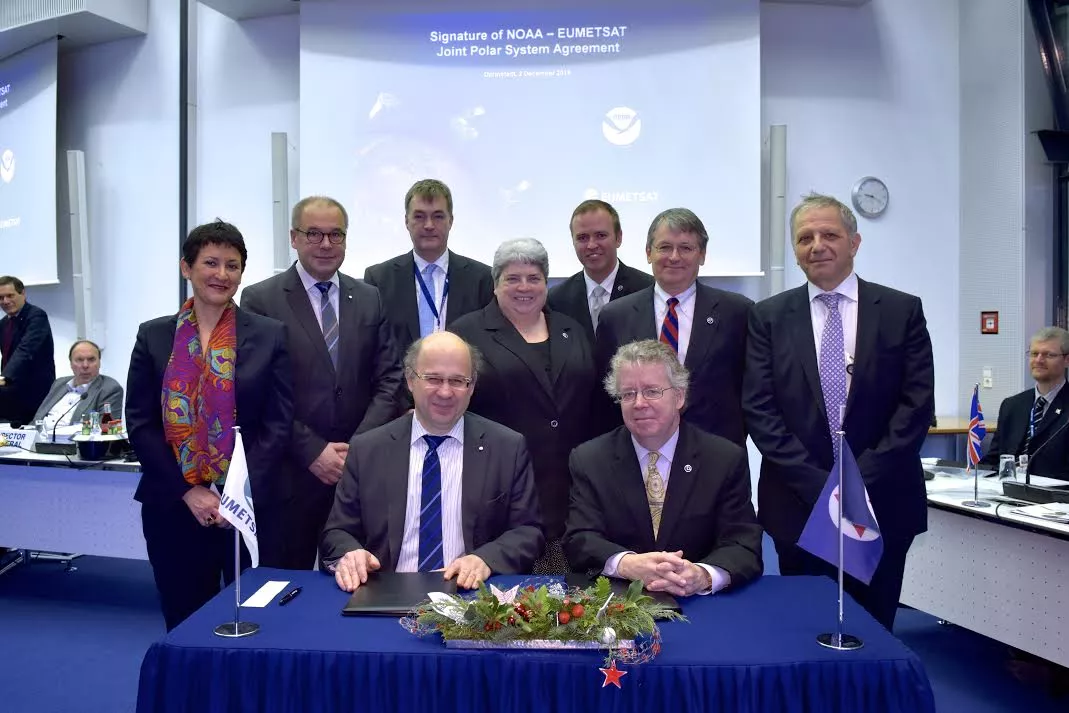
Did you know that the United States uses data from European polar-orbiting weather satellites, in addition to our own satellites, to help us produce our 3-7 day weather outlook? Our long-standing, international relationships contribute important data we use in U.S. forecasting, critical for the timely notice of severe weather events.
Today NOAA and EUMETSAT (the European meteorological space agency) signed an agreement to continue to share the burden of operating polar-orbiting weather satellites for the next twenty years.
Forecasters use numerical weather prediction models that rely on data collected by polar-orbiting satellites as they circle the Earth multiple times a day. The accuracy of these models depends on timely coverage of the globe which in turn requires observations from two different complementary orbits.

Under the Joint Polar System Agreement, NOAA and EUMETSAT will split responsibility for the two primary orbits: EUMETSAT satellites will cover the mid-morning orbit while NOAA will be responsible for the afternoon orbit.
This agreement cuts costs for the US taxpayer, because the U.S. only needs to build and operate half the polar-orbiting satellites it would need otherwise.
The agreement will cover NOAA’s planned JPSS-2, -3, and -4 satellites and EUMETSAT’s second-generation Metop satellites, ensuring that the U.S., Europe, and the world will have the data required for modern weather forecasting through the late 2030s. The agreement builds on existing cooperation with the first Generation Metop satellites, the U.S. POES satellites, Suomi-NPP and JPSS-1.
